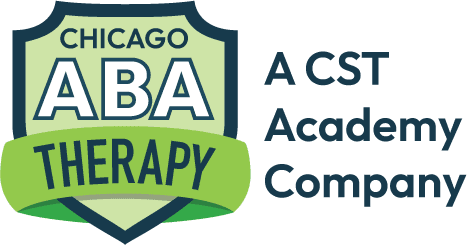Daily living skills are essential for maintaining independence and enhancing the quality of life for individuals of all ages. These skills encompass a wide range of activities that individuals perform regularly to manage their personal and household needs. For individuals with developmental disabilities, such as those receiving Applied Behavior Analysis (ABA) therapy, mastering daily living skills is crucial for achieving greater autonomy and integration into the community. This comprehensive guide will explore the definition, importance, types, and teaching strategies for daily living skills, particularly in the context of ABA therapy.
What Are Daily Living Skills?
Daily living skills, also known as activities of daily living (ADLs), refer to the routine tasks that individuals perform every day to take care of themselves and their surroundings. These tasks are fundamental for personal independence and include activities related to personal hygiene, dressing, eating, and managing a household. Daily living skills are typically divided into two categories:
- Basic Daily Living Skills (BADLs): These include fundamental self-care tasks such as bathing, grooming, dressing, toileting, and feeding.
- Instrumental Daily Living Skills (IADLs): These involve more complex tasks necessary for independent living, such as managing finances, cooking, cleaning, shopping, and using transportation.
Importance of Daily Living Skills
Mastering daily living skills is critical for several reasons:
- Independence: These skills enable individuals to perform essential tasks without relying on others, fostering a sense of autonomy and self-sufficiency.
- Quality of Life: Proficiency in daily living skills enhances an individual’s ability to participate in various life activities, contributing to a higher quality of life.
- Social Integration: Individuals who can manage their daily living skills are more likely to integrate successfully into their communities and participate in social, educational, and vocational activities.
- Reduced Caregiver Burden: When individuals can perform daily tasks independently, the demand on caregivers is significantly reduced, allowing them to focus on other aspects of support and care.
Teaching Daily Living Skills in ABA Therapy
Applied Behavior Analysis (ABA) therapy is an evidence-based approach that can effectively teach daily living skills to individuals with developmental disabilities. ABA therapy utilizes principles of behavior science to increase desirable behaviors and decrease undesirable ones. Here are some key strategies used in ABA therapy to teach daily living skills:
Task Analysis
Task analysis involves breaking down complex tasks into smaller, manageable steps. Each step is taught individually, ensuring the learner masters each component before moving on to the next. For example, teaching a child to brush their teeth might involve the following steps:
- Get the toothbrush and toothpaste.
- Apply toothpaste to the toothbrush.
- Wet the toothbrush.
- Brush teeth for two minutes.
- Rinse mouth and toothbrush.
Prompting and Fading
Prompts are cues or assistance provided to help the individual perform a task. Prompts can be verbal, physical, visual, or gestural. The goal is to gradually reduce (fade) the prompts as the individual becomes more proficient, ultimately enabling them to complete the task independently.
Reinforcement
Positive reinforcement involves providing rewards or incentives to encourage desired behaviors. For instance, if a child successfully washes their hands, they might receive praise, a favorite toy, or a small treat. Reinforcement increases the likelihood that the behavior will be repeated.
Modeling
Modeling involves demonstrating the desired behavior for the learner. The individual observes the behavior and then attempts to imitate it. For example, a therapist might model how to tie shoelaces, and the child will then practice the same steps.
Visual Supports
Visual supports, such as picture schedules or checklists, can help individuals understand and remember the steps involved in a task. These supports provide a visual representation of the sequence of actions, making it easier to follow and complete the task independently.
Generalization
Generalization ensures that the skills learned in therapy settings are transferred to real-life situations. This involves practicing the skills in various environments and with different people to ensure the individual can apply what they have learned in everyday contexts.
Examples of Daily Living Skills in ABA Therapy
Here are some examples of daily living skills that are commonly taught in ABA therapy:
- Personal Hygiene:
- Brushing teeth
- Washing hands
- Bathing and showering
- Using the toilet
- Hair care
- Dressing:
- Selecting appropriate clothing
- Putting on and taking off clothes
- Fastening buttons and zippers
- Tying shoelaces
- Eating and Drinking:
- Using utensils
- Drinking from a cup
- Following table manners
- Preparing simple meals
- Household Management:
- Cleaning and organizing
- Doing laundry
- Cooking and meal preparation
- Shopping for groceries
- Community Skills:
- Navigating public transportation
- Using money and making purchases
- Following safety rules in public spaces
Conclusion
Daily living skills are vital for promoting independence, enhancing the quality of life, and fostering social integration for individuals with developmental disabilities. ABA therapy offers effective strategies for teaching these skills, empowering individuals to achieve greater autonomy and participate more fully in their communities. By understanding and implementing these techniques, caregivers and therapists can make a significant positive impact on the lives of those they support.
For more information on ABA therapy and how it can help develop daily living skills, contact Chicago ABA Therapy today. Our team of experienced professionals is dedicated to providing personalized and effective support for individuals with developmental disabilities.








